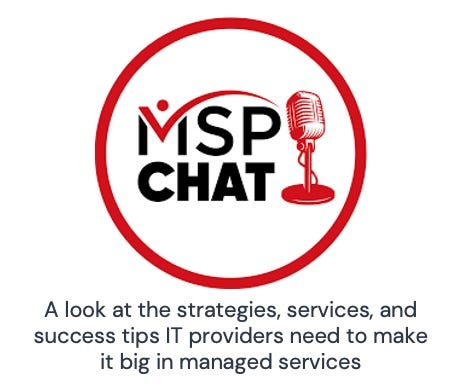Early Days in Navigating Tariffs
Thoughts from HP on supply chain readiness. Advice from ConnectWise and Kaseya for anxious MSPs.
SaaS management platforms are good at exposing shadow AI. They’re also good at revealing what businesses are spending in the cloud. It’s typically not a pretty picture at first.
“25% of SaaS licenses are waste,” says John Harden, Auvik’s director of strategy and technology evangelism, mostly due to overprovisioning and dormant accounts that should have been deactivated but never were. Finding and eliminating that waste is a service customers appreciate.
“It puts money back in their pockets,” Harden says.
That’s always in fashion, of course, but may prove even more popular soon. Because nine days after the Trump administration first announced them and two days after it suspended them for 90 days, there’s still much we don’t know about what tariffs are going to mean for the economy generally and the IT industry specifically.
HP, for one, is unfazed. Just weeks after bending over backwards to assure partners it can handle whatever the White House has in store, the company remains confident it’s ready for anything, per a statement supplied to Channelholic:
“Our strong relationships with supply chain partners around the world allow us to remain agile and responsive to changes, as we are not tied primarily to company-owned infrastructure or factories in countries heavily impacted by tariffs. We will continue to monitor developments and have the ability to adjust operations as needed.
Personally, I’d argue that some of the nations in HP’s globally diversified supply chain will be heavily impacted if the tariffs announced last week go into effect three months from now. Thailand’s rate, for example, would rise to 36%, while Indonesia’s would climb to 32%. Not quite the 145% China’s paying at the moment, but still.
Even at today’s 10%, though, tariffs are likely to drive hardware prices up. Both IDC and Canalys, in fact, warned this week of volatility ahead in PC shipments for that very reason despite a reasonably strong Q1 and Windows 10’s ever approaching EOL.
Meanwhile, what looks to be a blow to hardware makers could end up being a boon to Microsoft and Nerdio. According to a recently published study performed by Forrester on behalf of Microsoft, 58% of organizations with experience deploying Windows 365 saved $1,000 or more per user by issuing virtual rather than physical desktops. If word gets around about numbers like that, businesses nervous about hardware spending might start buying more Cloud PCs, leading MSPs and IT departments to buy more Nerdio software for managing those Cloud PCs.
“There’s an argument to be made that any technology solution that is not hardware heavy maybe benefits from this,” says Vladimirskiy of tariffs. “But who knows? Things are changing on an hourly basis. It’s hard for us to predict.”
I’d go a step further and say it’s impossible to predict market trends right now for everyone, very much including MSPs, many of whom don’t have the kind of cash cushion Nerdio, Microsoft, and HP can tap into if we find ourselves in a recession.
ConnectWise, as it happens, shared timely recommendations on preparing for “the next emergency” in a recent newsletter commemorating the last one, the Covid pandemic that began five years ago. Peter Kujawa, the vendor’s executive vice president of Service Leadership and IT Nation, has further thoughts of his own.
“If ‘the next emergency’ does hit,” he writes in emailed remarks, “MSPs will first feel the impacts with delayed or cancelled projects from their clients. That will be felt in the first 1-2 quarters. Managed service declines will be slower but if you are tracking the number of users you are supporting, you’ll see the declines and within 3 quarters, you’ll likely be down 10-15, maybe 20% in a true, 2008 style, recession. As MSPs see their projects and user counts trail off, they should be adjusting staffing accordingly, ideally through attrition and adjusting hiring plans.”
For his part, Gary Pica, founder of MSP consultancy (and Kaseya unit) TruMethods, plans to suggest the following during a peer group meeting next week:
Take command over the business. This means dialing in operations and finance. Conserving resources, reducing waste, defending revenue. Be prepared for non-recurring revenue like projects to freeze. Find ways of pulling work forward by doing work now and billing over time in order to keep resources billable.
Overcommunicate with customers, employees, and vendors.
Stay on top of AR and establish a line of credit.
When customers ask for concessions, use it as a way to extend agreements. Lower price in the short term and get it back over the life of the agreement.
Focus on sales. As competitors falter you can gain new logo sales.
This is all based on experience gleaned from past downturns, notes Pica, who was a pioneer-generation MSP years ago. Here’s hoping today’s MSPs don’t end up needing his hard-earned wisdom.
Anxious about the future?
Why not unwind with a good podcast? The one I co-host features marketing communications advice for MSPs from Xavier Gonzalez, Kaseya’s chief communications officer, plus a hint or two about the big product news coming in a few weeks at the Kaseya Connect conference in Las Vegas. Tune in here:




